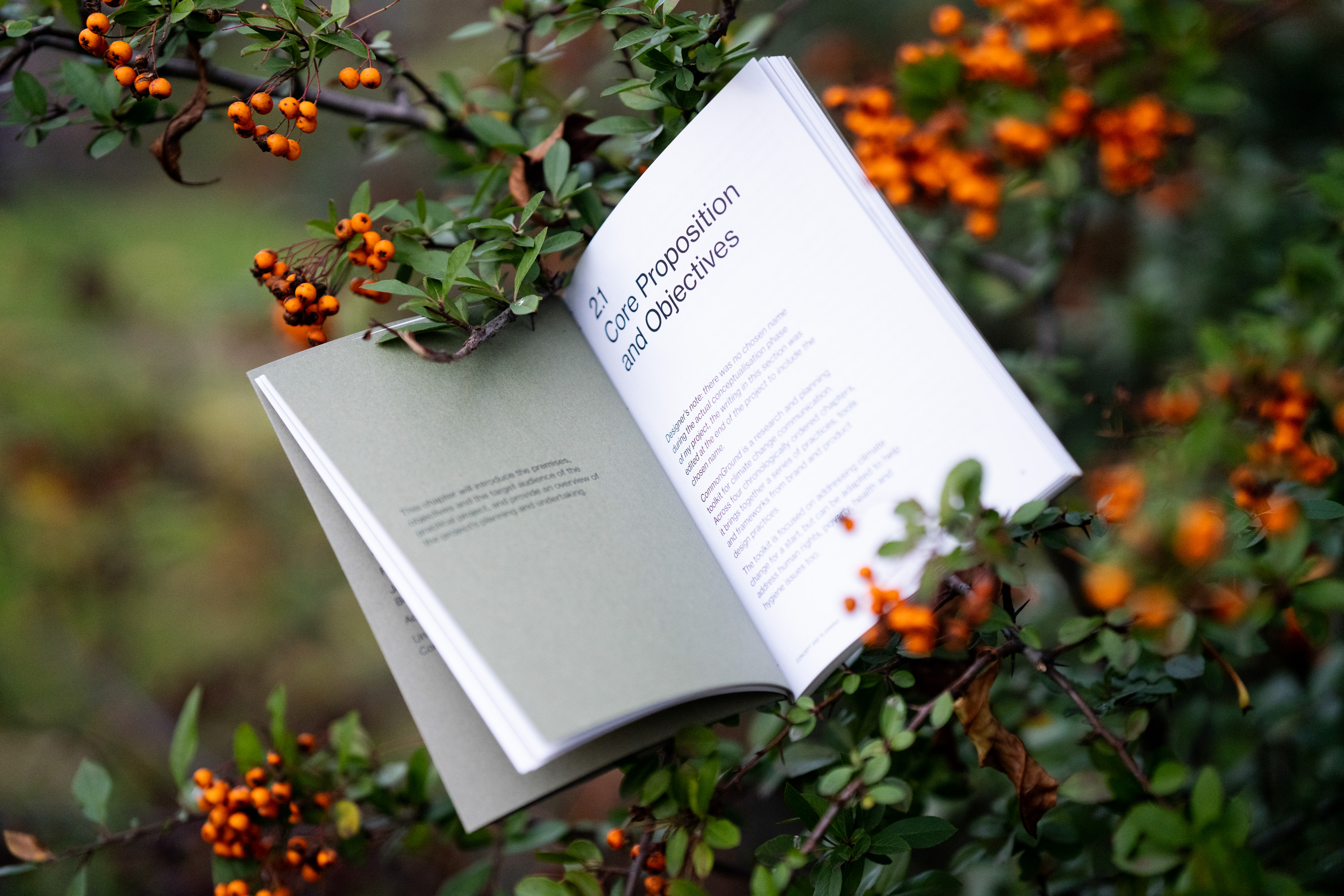Climate miscommunication: A comparative study of brands and climate change dialogue
Campaigners for climate change action often struggle to gain traction, not because they are wrong, but because they forget to take the interests and experiences of their audience into consideration.
In today’s consumerist society, an ever-growing number of individuals align their identities and values with projections of consumer brands. At the same time, communication efforts addressing the devastating, real effects of climate change are struggling to reach the global audience it desperately needs.
My dissertation, Climate Miscommunication: Why Brands Work, and How Climate Change Communication Can Learn From It and the resulting project prototype Commonground- Climate Communication Toolkit is my attempt to understand and draw comparisons between the realm of brands and the world of climate advocacy, to answer the question:
How can brand design strategies be appropriated to influence engagement in contemporary climate change communications?

Part 01 - Dissertation
While various studies have examined flawed aspects of the climate change dialogue, little research deals with the visual design strategies that convey messages concerning climate change.
The theoretical study analyses how visual design is used by brands and climate change initiatives to appeal to the contemporary audience. Through research, analysis and comparative studies, the paper proposes various new approaches to communicate climate change in the real world more effectively.





Part 02 - Project & documentation
What if we approached designing for climate communication the same way we would design a brand or product?
As an extension of theoretical research and writing, Common Ground is a digital toolkit for more effective climate change communication. Building on the key ideas of the design thinking process, the prototype project offers climate initiatives a new, iterative, audience-centred approach to communicating ecological awareness.
As a companion publication, the project documentation is a record of my ensuing thinking, decision making and design process.
Discover project ︎︎︎





Printing & production
In an attempt to amplify the subject of the dissertation and project documentation, a conscious choice was made to reduce the footprint and impact of printing and production.
The cover and chapter openers are printed on Metapaper ecoFIBRES Natural Green, made with recycled paper, mill-waste fibre, and 30% hemp fibre. Content pages are printed on Metapaper Extrarough Recycling, FSC® certified and manufactured using 100% wind energy.
The ink is free from mineral oils, cobalt, and toxic heavy metals. The entire sourcing, printing and shipping is climate-neutral courtesy of F&W Media, natureOffice and courier partners.

Best Prize: Communication design
University of Europe for Applied Sciences
Advisors
Prof. Emily Smith, Edo van Dijk
Printing
F&W druck- und mediencenter gmbh
Documentation
Emre Aydogan